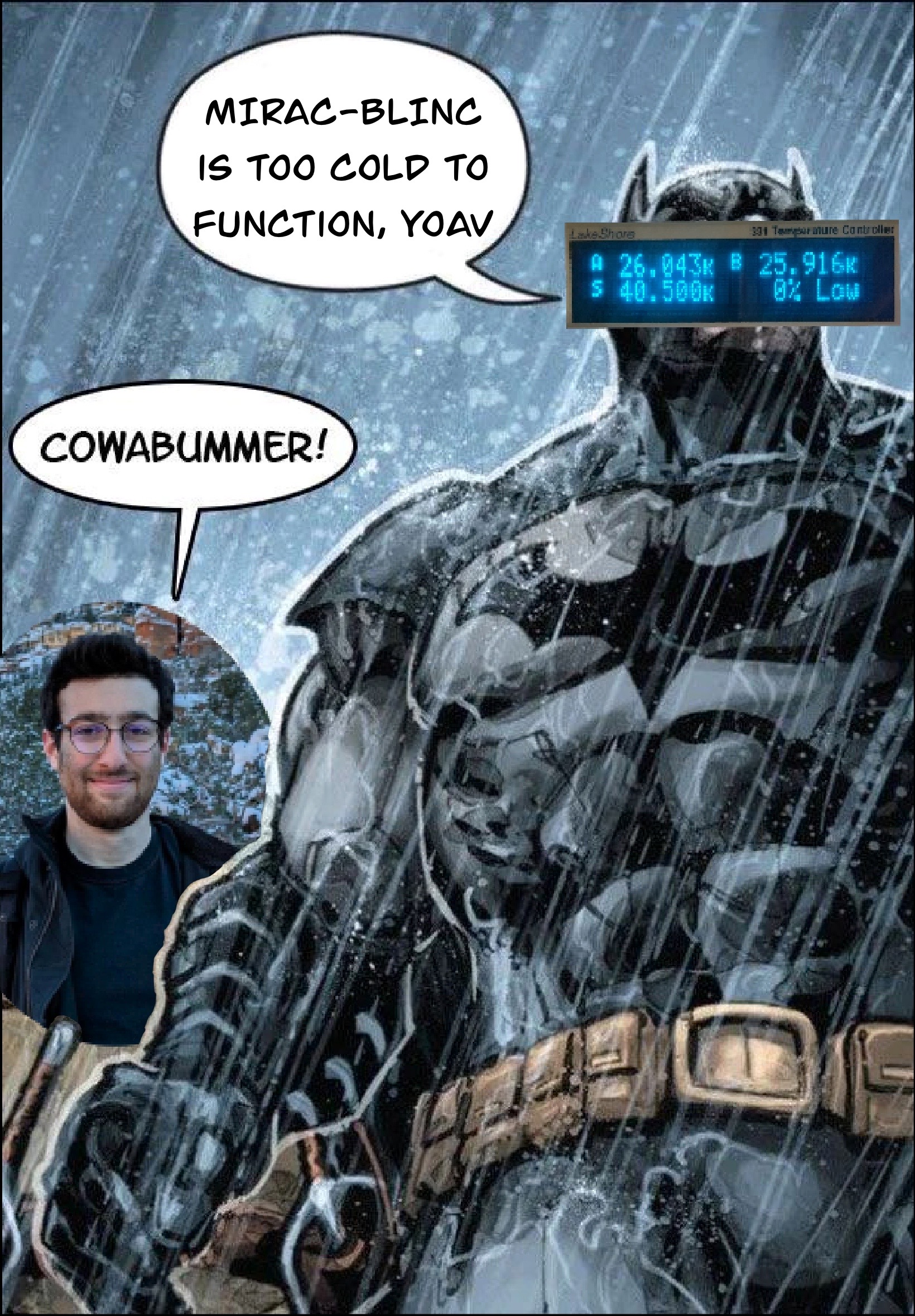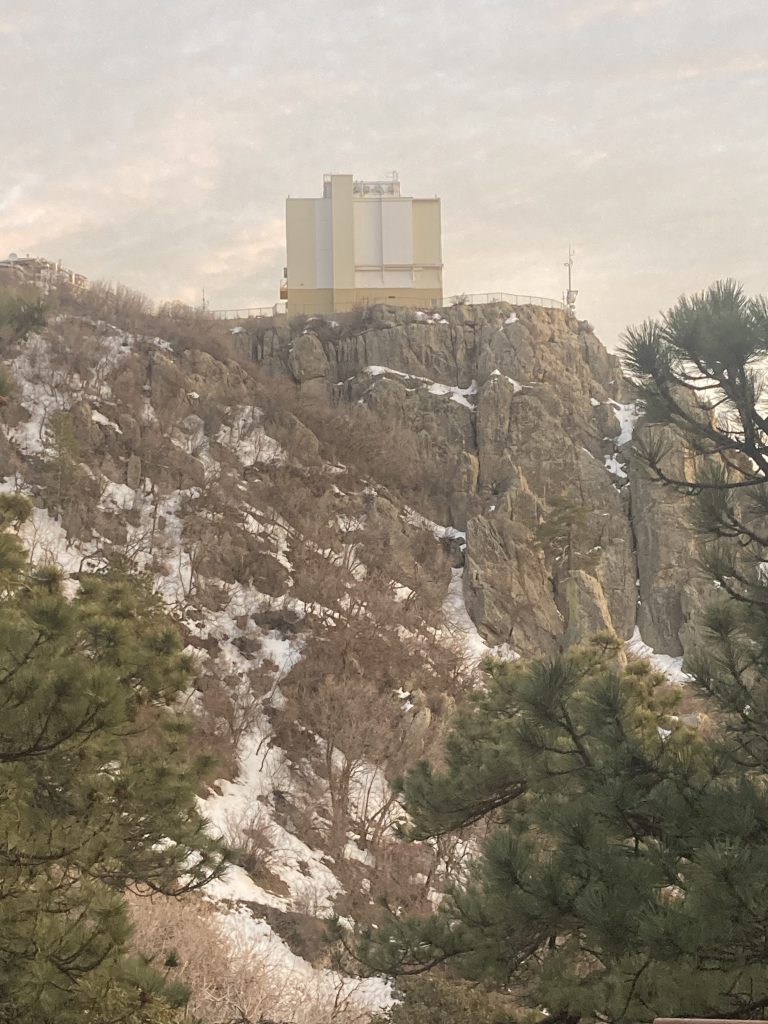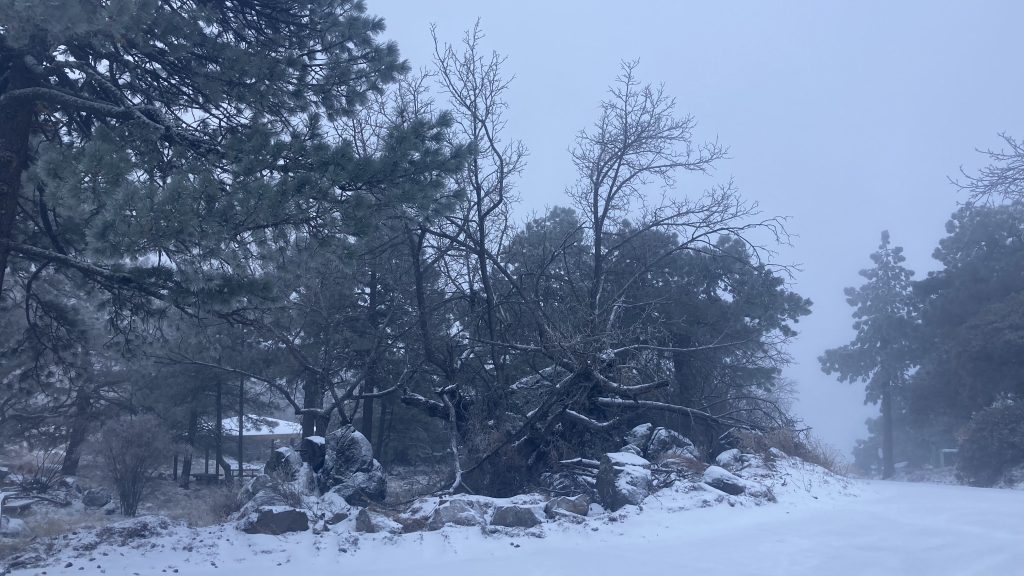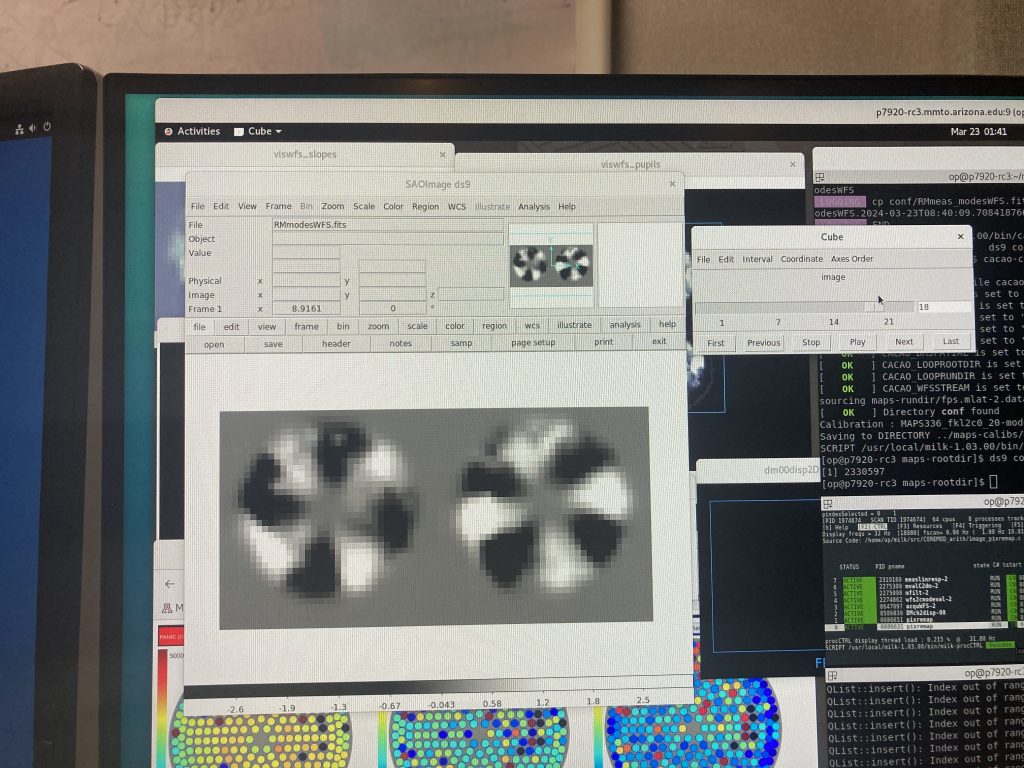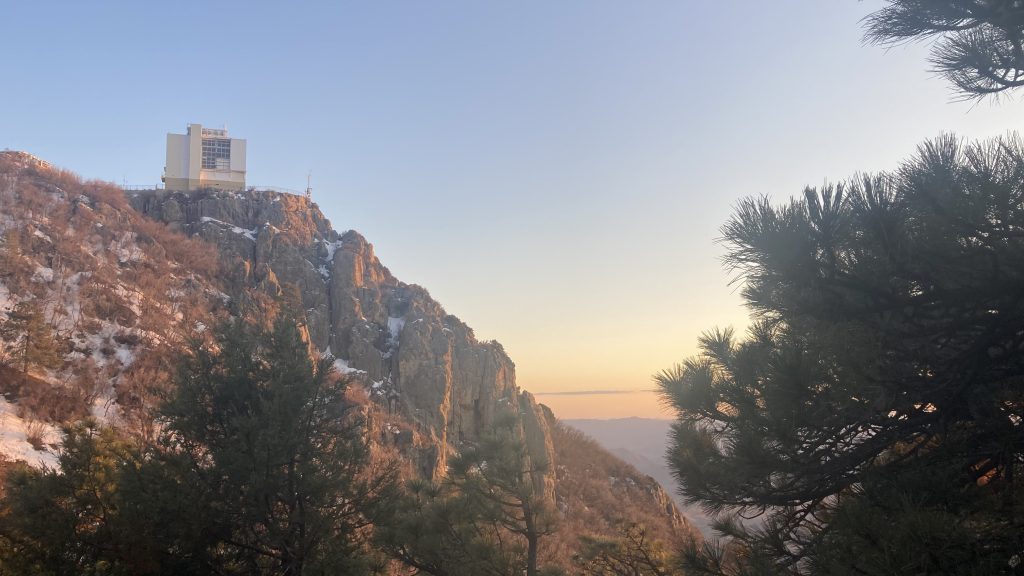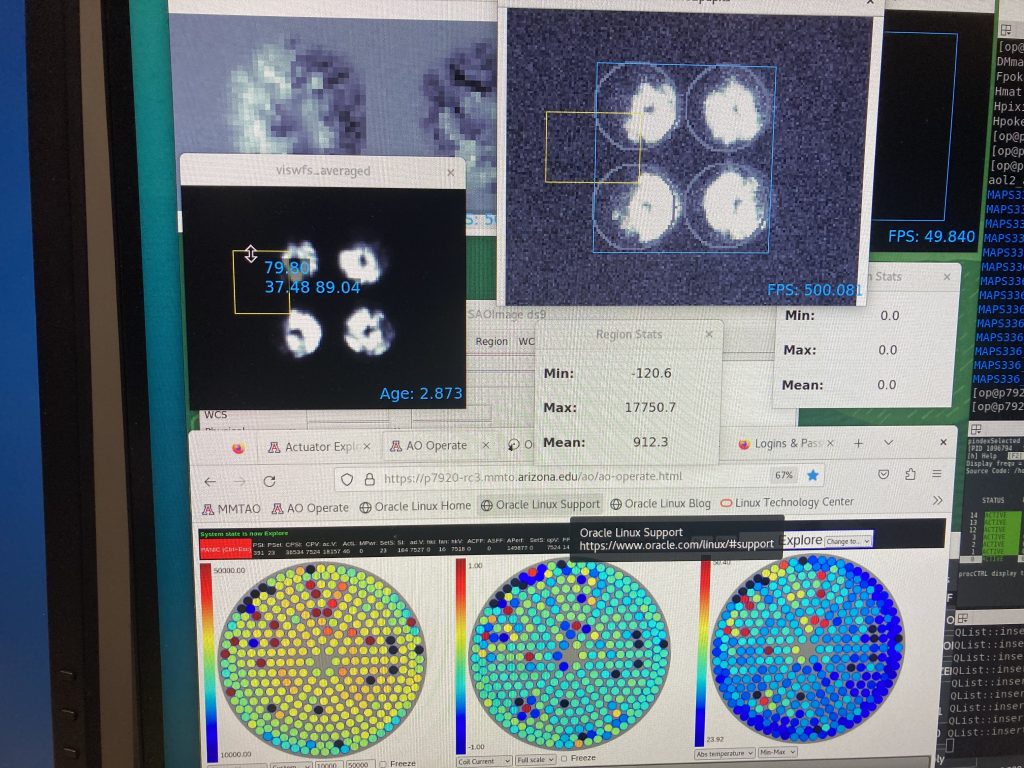The duality of nature is something I’ll never stop wondering at: my first post came to you on a night so action-packed, I felt incapable of writing every detail down. Last night, however, we didn’t leave lightning shutdown.
To bide the time in hopes of some sky-time, Amali guided me through the MAPS CACAO simulation; from starting up the server, deformable mirror and wavefront sensor, to closing the loop with 20 modes, 50 modes, and finally 100 modes. Hopefully this means we’ll be able to reach 100 modes on-sky!
Next, Lauren was shown the ways of simulated CACAO. It was comforting to know we wouldn’t break the ASM since this was only a simulation, and it was alright to push the mock-ASM to its limits and discover what not to do to the real deal. Apparently, completion of the simulation means I am now prepared to operate the AO system on-sky solo. But, I still feel like a tenuous sapling whose very existence/job/ASM is threatened by anything stronger than a mild breeze.
Amali’s pedagogy then dictated Lauren and I teach Parker how to operate the MAPS simulation. Thusly, we discovered the gaps in our learning and may have unintentionally confused Parker in the process but, he did succeed in reproducing a 20-mode loop. Maybe we didn’t do so bad after all? Our next step towards becoming strong AOaks is to write the simulation steps in our own words. Gee, it’s a good thing lab classes were a requirement for graduation; who would have thought writing reports was so important? (I jest, I jest)
The word of the night is Arizona. Talking to Yoav, I was reminded that not only does Steward Observatory and the University of Arizona contribute significantly to astronomy and humankind’s exploration of space; but so does every University in Arizona. We are strengthened by our inter-university collaboration, now more than ever. In this sense, I dare to say Arizona means ad astra per intellectum et cooperante–to the stars through understanding and collaboration.
Now, I would love to explain the majesty of the storm that kept us from opening, but words would not do it justice. So I’ll let the photography of our talented telescope operator, Brian Pinault, speak for me. Ever the diligent guardian of our invaluable tools, Brian captured this moment of volatile yet sublime nature while visually surveying the storm’s trajectory.
In honor of the storm, the song of the night is The Tempest, Op 18 by Pyotr Ilyich Tchaikovsky.
I’d like to add a bonus to tonight’s post. If you don’t already listen to Ologies, the science podcast by Alie Ward, then you are missing out. Let me present to you one of you new favorite listening experiences with the episode on Fulminology, the Study of Lightning. Check it out, or your chances of being struck by lightning may increase! (again I jest, I jest)



